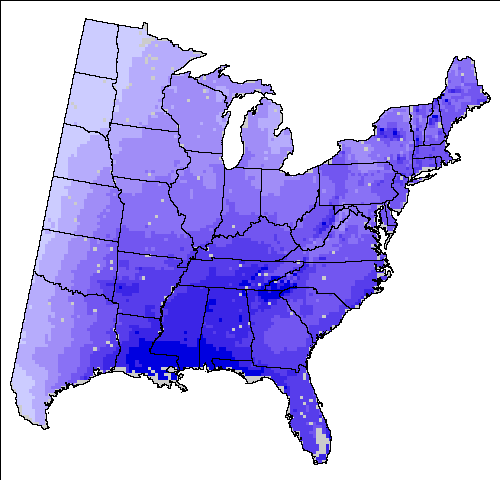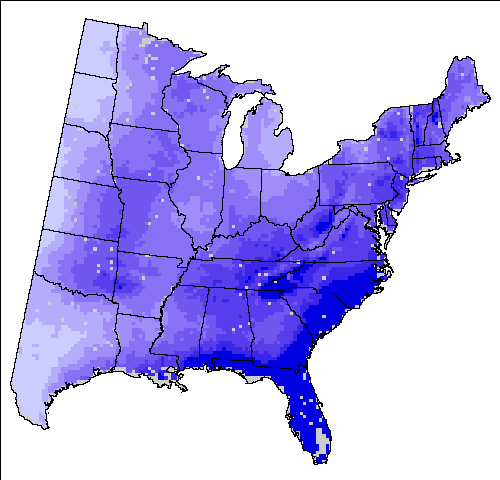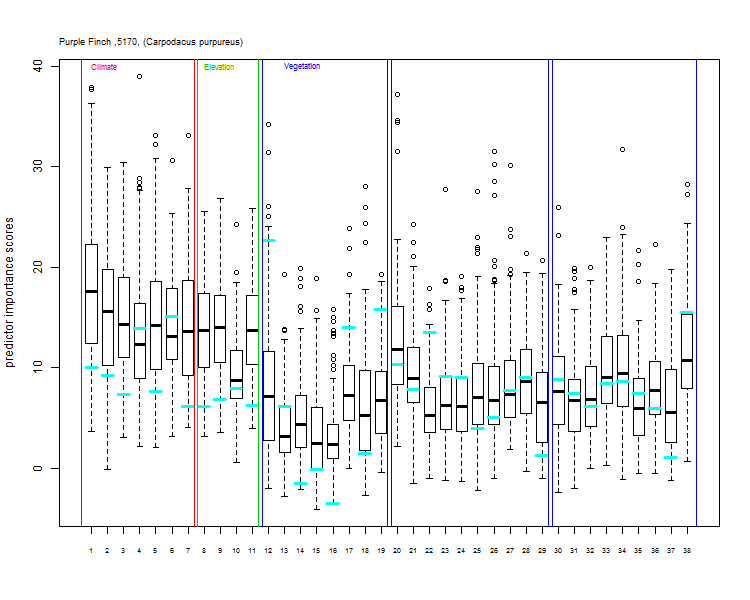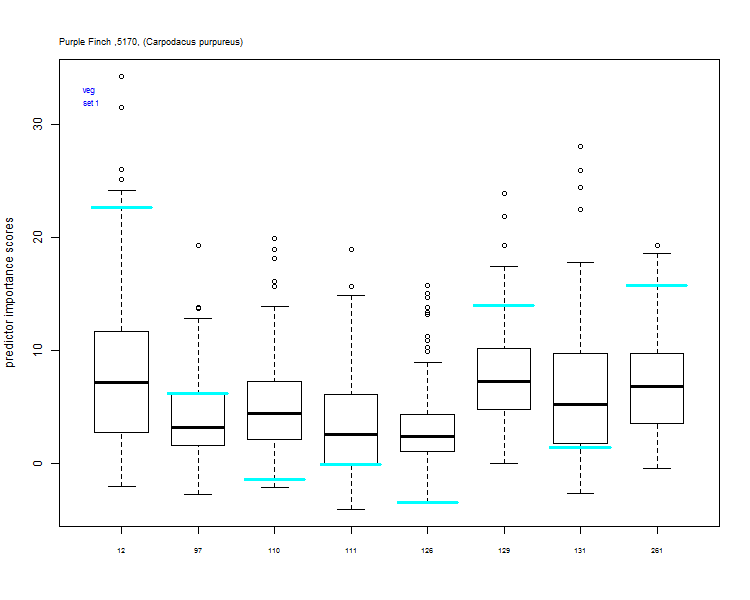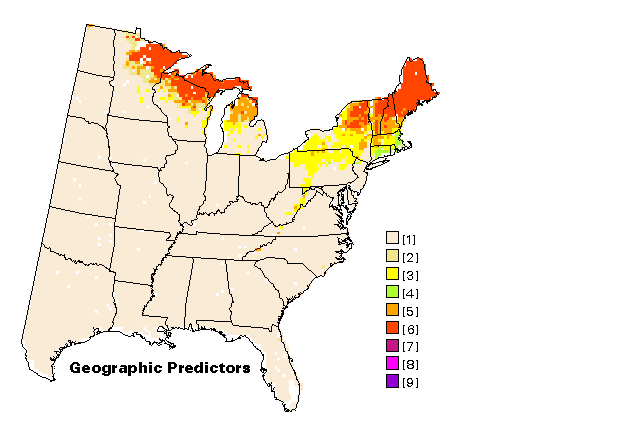Purple Finch (Haemorhous purpureus)Reliability of Model: High 
Climate Change Scenario Maps  Help »
Help »

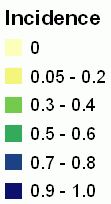
Potential Changes in Abundance and Range (Future) |
|||||||||
|---|---|---|---|---|---|---|---|---|---|
| GCM SCENARIO | % Area Occ | Ave IV | Sum IV | Future/Current IV | |||||
| Current Modelled | 20.2 | 0.472 | 931.8 | ||||||
| Current Breeding Bird Survey | 2.8 | 0.598 | 163.8 | ||||||
| HadleyCM3 – A1FI (High, "Harsh") Climate Scenario | 10.2 | 0.272 | 270.3 | 0.29 | |||||
| PCM – B1 (Low, "Mild") Climate Scenario | 15.3 | 0.403 | 603.1 | 0.647 | |||||
| Avg. of 3 GCMs – A1FI (High) Climate Scenario | 10.8 | 0.303 | 319.9 | 0.343 | |||||
| Avg. of 3 GCMs – B1 (Low) Climate Scenario | 13.1 | 0.356 | 457.2 | 0.491 | |||||
Notice:
This is an version 2 of the Climate Change Bird Atlas. You can view the previous Purple Finch page or browse the previous Bird Atlas. Version 2 of the Bird Atlas is based on Version 3 of the Climate Change Tree Atlas.

Species Information
- Family:
- Fringillidae
- Breeding Status:
- temperate
- Primary Breeding Diet:
- seeds
- Habitat:
- shrubland

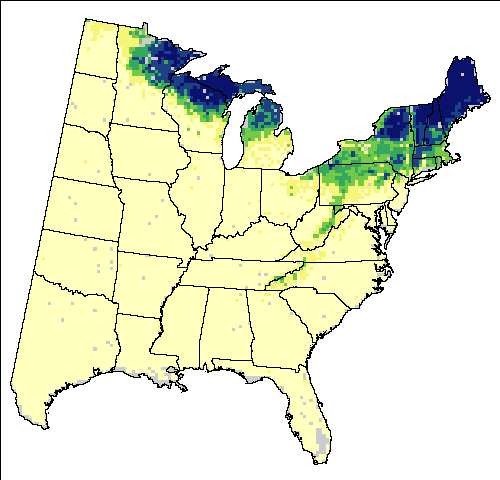
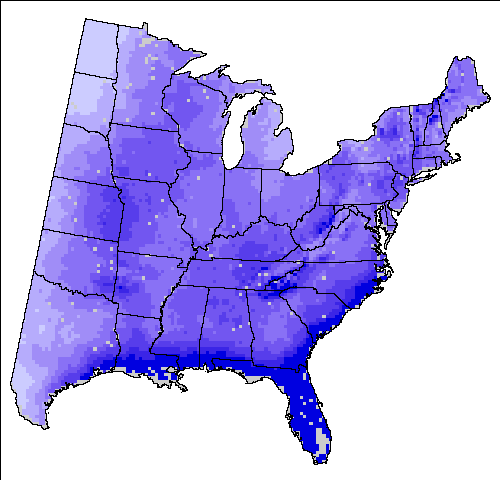

 Click and drag the orange handle over the maps to compare.
Click and drag the orange handle over the maps to compare.
